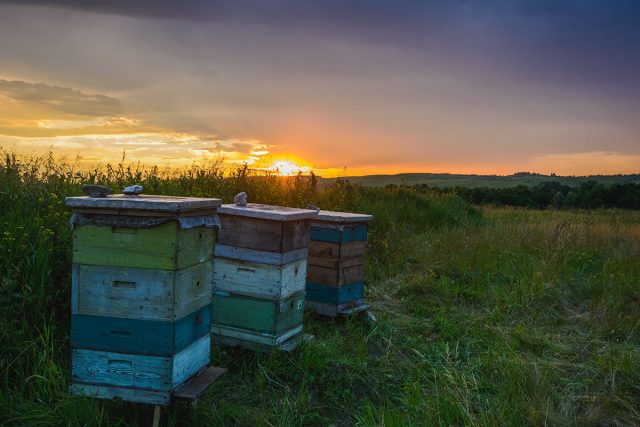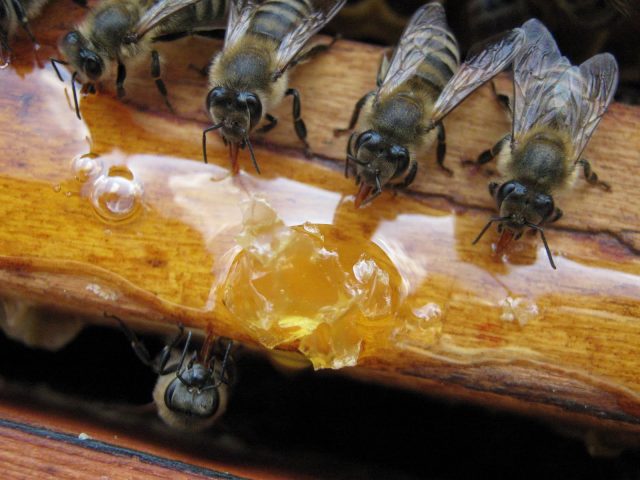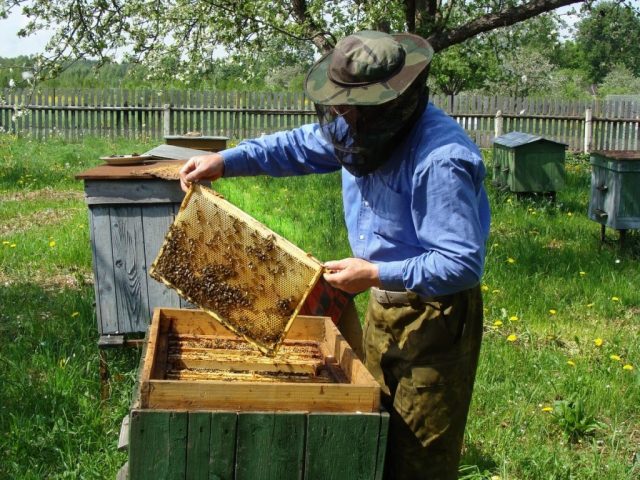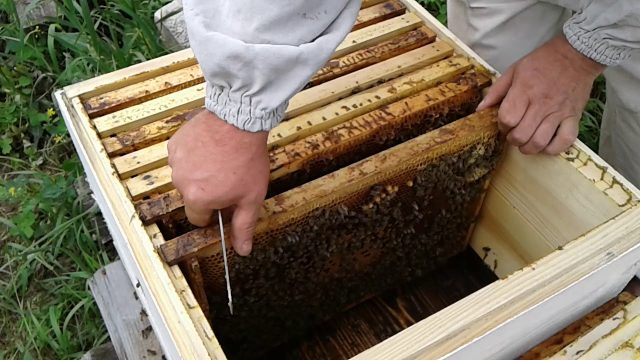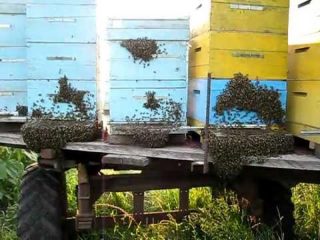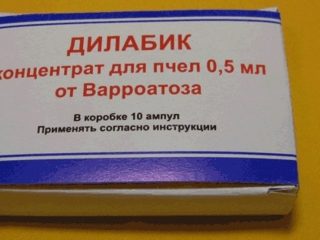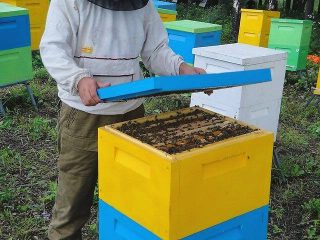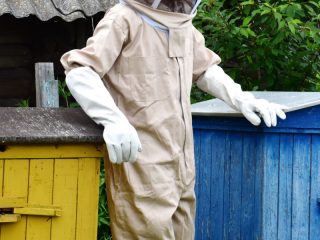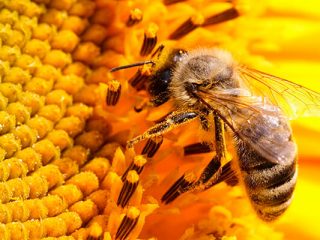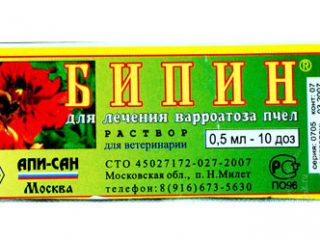Content
- 1 What bees do in the fall
- 2 Work in the apiary in autumn
- 3 Autumn revision of bee colonies
- 4 Autumn work with bees
- 5 How to form a nest in the fall
- 6 Feed placement
- 7 When you need to close the lower notch in autumn
- 8 Preventive work in the apiary in the autumn
- 9 Apiary work in October
- 10 When the work on the apiary ends
- 11 Conclusion
Autumn work in the apiary is a responsible business for any beekeeper. The first month of autumn in beekeeping is the period when the collection of honey in the apiary is already over, and the insects are finishing their work. From this point on, work should begin to prepare for the winter. Many novice beekeepers are not yet fully aware of what manipulations need to be carried out with bees and hives in the autumn period of the year.
What bees do in the fall
For most of the bee colonies living in the apiary, the autumn period begins at the end of summer. The exact date will depend on the area in which the apiary is located and the type of crops the bees work with. In the autumn period, the behavior of bees and the structure of the hive changes significantly. The following changes in the apiary can be highlighted:
- The bees continue to collect the last nectar. At the same moment, the saving of food supplies begins;
- Drones are expelled from the bee colony. This is because the swarming process is already over and there is no longer a need for keeping drones;
- In the autumn, the center of the frames is freed up for new larvae, and the main stocks of honey are moved to the upper part of the frames;
- The process of laying offspring by the uterus is significantly slowed down;
- To avoid the theft of supplies by other families living in the apiary, bees increase the number of guards, while the size of the entrance is reduced.
In the autumn season, the population of the apiary also decreases, and some of its individuals get increased fatigue. During the collection of honey, many individuals died, and some of those that remained would not be able to survive the winter. All the family's hope rests on the new generation of bees, on which the strength of the entire swarm will depend. This process must be monitored and regulated by the beekeeper. Autumn work can prevent the mass extinction of bees in the apiary from various diseases and parasites.
Work in the apiary in autumn
Taking care of insects such as bees in the fall is quite painstaking work, since a whole range of measures must be performed. First of all, the honey harvesting period must be successfully completed. After that, work begins on preparing the bees and the hive for winter.
The autumn period for bees lasts from September 1 to October 15. During this time, the following processes should be carried out:
- From 5 to 10 September, autumn feeding is performed. Further use of sugar syrup can negatively affect the ability of the bees to survive the winter. If natural pollen plants are absent, autumn protein feeding is required;
- There should be no drones in bee colonies on September 10;
- September 12 is considered the time when the last young individuals of the family appear;
- From about September 14, the flowering of crops ends, with the help of which bees can stock up for the winter;
- September 15th is considered the day when the brood is almost over. During this period, it is required to perform an autumn audit and start assembling a bee nest;
- In the period from September 16 to 30, work begins on the treatment of bees;
- Bees switch to winter mode of life from September 25;
- Around the beginning of October, insects make the last flyby of the apiary, and after that, bees have a non-flyby period, the duration of which can reach six months.
Autumn revision of bee colonies
An autumn audit is an extremely responsible job for every beekeeper, which makes it possible to regulate the following processes in the apiary:
- Availability and quality of feed prepared for the winter;
- Arrangement of a hive for a comfortable wintering of bees;
- Conducting an estimate of the population of the hive, and its regulation;
- Cleaning, as well as medical and sanitary treatment of individuals and their homes;
- Assembling the nest for wintering.
The number of surviving bees in the apiary after winter, as well as the strength of the family, will depend on the successful and timely completion of all tasks in the autumn. Working with bees in the fall significantly affects the amount of honey that can be collected for the next season.
Autumn work with bees
A rather important stage in the work with insects in the apiary in the autumn is the culling of the bee colony. The number of colonies that remain for the winter directly affects the amount of food required for distribution to the bees. It is undesirable to skip the autumn culling, since insects make food reserves from the food for the winter, and if the colony turns out to be weak, it will be more difficult for the bees to provide the entire swarm. If in the fall it is necessary to transplant a colony of bees into another hive, this work should be done in advance, since the bees need to settle in a new place, and this will be very difficult to do in a short period of time.
Autumn culling should be performed in the following cases:
- Weak families... In this case, the two colonies need to be merged or moved to stronger families;
- Low productivity of an individual family... The most common cause of this problem is a weak queen that cannot produce enough brood. In such a situation, the main task is to maintain the required number of individuals in the family. Here you need to decide whether another uterus will help increase the number of insects in the colony, or whether it will be necessary to transplant the swarm to a stronger family;
- The presence of sick individuals... If the disease is not noticed in time, it can progress rapidly. There are frequent cases when it is necessary to destroy the entire sick family in order to save the entire bee farm from infection;
- The presence of a large number of drones in the colony... Insects often regulate the number of drones on their own. If there are a lot of them in the family, then the next season the bees will collect little nectar. A large number of drones will entail the weakening of the entire family, since insects will eat a lot of food in winter.
How to form a nest in the fall
The work on the formation of the nest is one of the most important tasks in the autumn period. Ideally, bees should create nests on their own, and the beekeeper should only control this process.
Strong bee colonies spend the winter in 8 - 12 frames. For this process, it is better to use a two-way nest arrangement. Frames with the smallest amount of honey (2 - 3 kilograms) should be placed in the center, and with the largest (4 or more) - along the edges.
For medium-sized colonies, the angled method is recommended. The most honey-filled frame should be on the edge. As you get closer to the center, the amount of honey in the frames should decrease.
If the family is weak, it is better to use the "beard" method, where the frames with the greatest amount of honey are concentrated in the center. In this case, the total supply of feed should be about 16 kilograms.
Feed placement
One of the best stocks of food is considered to be sealed flower honey. The number of completely filled frames with honey depends on the size of the colony.If the design of the hives is multi-hull, then the food should be placed on top, since the bees are below. In the sun loungers, frames with honey are placed along the edges.
If one-sided placement is used, then a heavy frame should be installed on the edge, the weight of which is 3 - 3.5 kg. Another two or three honeycombs of 1.5 - 1.8 kg each need to be placed opposite the entrance. Then there are frames weighing 2 kg or more.
Approximate amount of food that you need to stock up for the winter:
- For a strong nest - 16 - 18 kilograms (10 - 12 frames);
- Average nest - 15-16 kilograms (7-9 frames);
- Multi-hive hives - up to 30 kilograms per hull.
When you need to close the lower notch in autumn
The experience of many beekeepers shows that when working with bees there is no need to close the lower entrance. This recommendation works if there is a strong colony in the hive. An open entrance allows insects to survive the winter better.
Preventive work in the apiary in the autumn
When working in an apiary, it is not recommended to forget about preventive procedures that can save the entire colony of bees and prevent insects from flying in the fall, which can occur due to the inconvenience of living in the hive.
Uncomfortable conditions can lead to diseases in the apiary, due to which insects will die. To avoid such problems, you need to carry out treatment for varroatosis, ticks, and other diseases.
The most popular drugs are:
- Amipol;
- Bipin;
- Polisan.
To successfully carry out prophylaxis for bees in the fall, it is required to follow a certain sequence of actions. The first step is to dilute the content of any drug with two liters of water. To perform the procedure, a special nebulizer or syringe is used.
All activities in the apiary should be completed before the insects begin to gather in the club. This is due to the fact that processing during this period can lead to the death of the uterus. The best time to complete the procedure is considered to be the time after the brood emerges, as well as the flyby of young individuals. During this period, insects normally tolerate chemical treatment. To fight infectious diseases, it is better to mix the agent with top dressing, and then give it to the bees.
Apiary work in October
In order for insects to successfully survive the cold, it is necessary to prepare a winter house for them. First of all, you need to carefully dry it, and also adjust the ventilation system. Even in summer, it is necessary to remove the door from the winter house, open the hatch and all ventilation pipes. All gaps in this structure must be carefully sealed. If the wintering house is of an aboveground or semi-underground type, it is necessary to equip an external backfill.
A few days before placing the hives in the winter house, it must be heated with an iron stove and smoked with sulfur. In this case, the following calculation should be applied: 30 grams per 1 cubic meter of space. After the completion of this work, the winter house is closed for a day. After a day, the walls and ceiling must be swept with a stiff brush.
When preparing an apiary for wintering, you need to think about protecting the housing for bees from mice. Insulation of the hives is also important. Insect houses should be well protected from frost, wind and animals. For such purposes, various boxes, shields and barriers are suitable. If the bees are going to spend the winter indoors, it is necessary to build an omshanik. To do this, you need to dry the moss and make a thick carpet of straw, dry reeds, or sedge.
When the work on the apiary ends
All work on the apiary must be completed by the end of October. Bee houses should be warm and all doors closed.
Conclusion
Autumn work in the apiary requires constant attention and control. The main thing that beekeepers need to do in the autumn is to prepare houses for bees and insects themselves for wintering.
